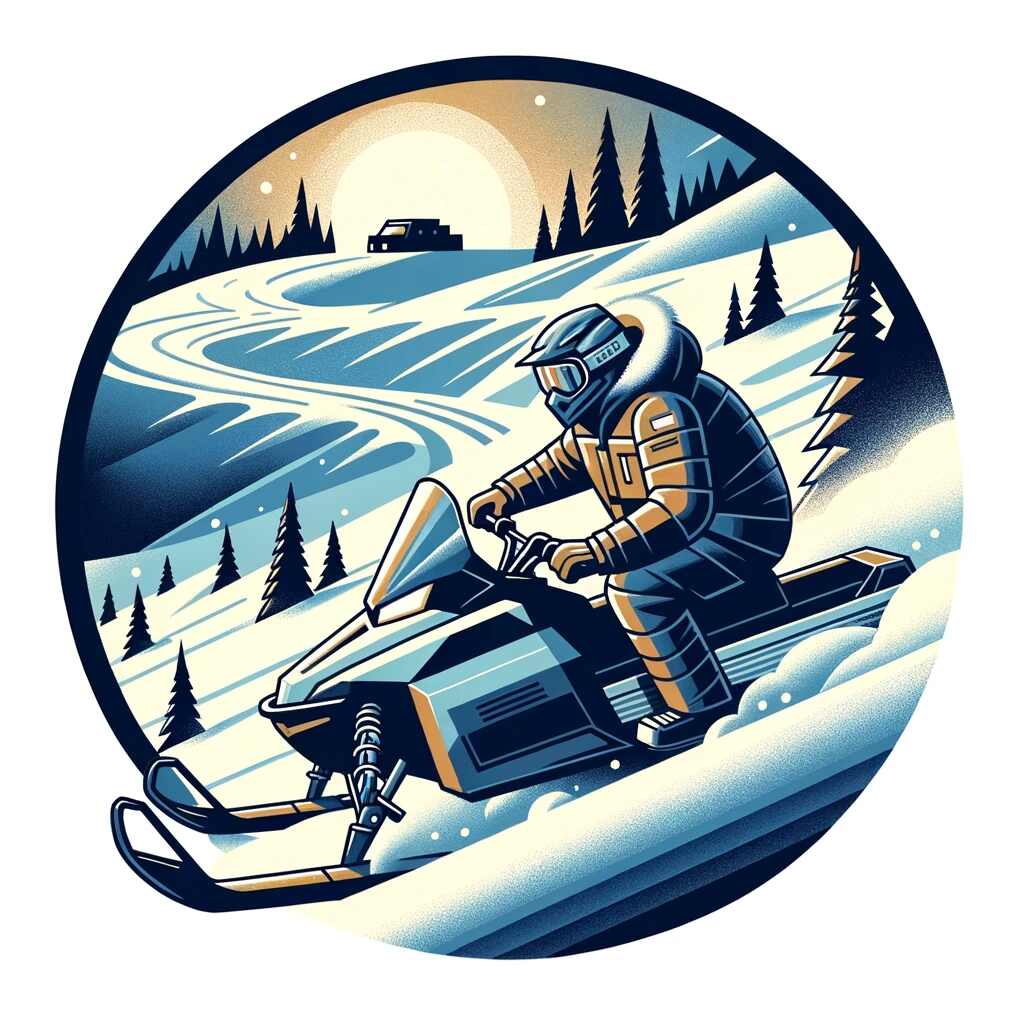Snowmobiling is an exhilarating winter sport that allows enthusiasts to explore snow-covered landscapes in a unique and thrilling way. Riding a snowmobile on flat terrain can be relatively straightforward, but when it comes to navigating hills and inclines, it becomes a different challenge altogether. One of the key skills every snowmobiler should master is knowing where to lean your body when traversing a hill on your snowmobile.
When traversing a hill on your snowmobile, the key is to lean your body forward when descending and slightly forward when ascending. This forward body positioning helps maintain balance and control. When going downhill, leaning forward prevents the snowmobile from tipping backward. While climbing, shifting your weight forward prevents excessive ski or track lift.
Let’s explore essential hill riding techniques for snowmobiling, including the physics involved, proper body positioning, and safety tips, to ensure a confident and safe experience
Understanding the Physics
Where Should You Lean Your Body When Traversing a Hill on Your Snowmobile?
Before we get into the nitty-gritty of body positioning, it’s essential to understand the basic physics at play when riding a snowmobile on a hill. When you’re going up or down a slope, there are a few forces in action:
- Gravity: This is the force that’s pulling you and your snowmobile downhill. Going downhill too fast can lead to a dangerous situation while going uphill requires enough power to conquer gravity.
- Friction: The interaction between your snowmobile’s skis or tracks and the snow beneath is what gives you control. Proper body positioning helps distribute your weight for stability.
- Engine Power: Your snowmobile’s engine is a big player in hill climbing. Choosing the right snowmobile with sufficient horsepower is essential for tackling steep slopes.
With these fundamentals in mind, let’s dive into how to position your body when you’re out there on the snowy hills.
Body Positioning for Descending Hills
Descending a hill on a snowmobile can be both exciting and challenging. To keep things under control and ensure your safety, remember these tips:
- Sit Forward: As you head downhill, position your body towards the front of the snowmobile seat. This shift in weight forward prevents your snowmobile from tipping backward and causing a rollover.
- Hold Those Handlebars: Always keep both hands firmly on the handlebars for maximum control. Keep a relaxed grip to prevent fatigue and maintain control.
- Bend Your Knees: Slightly bending your knees while keeping your feet on the footrests helps with shock absorption and balance as you encounter bumps and uneven terrain.
- Keep Your Eyes on the Path: Focus your gaze ahead, scanning for any obstacles or changes in terrain. Staying alert and proactive in navigating the trail is key.
- Use Your Body Weight: When making turns while descending, use your body weight to shift your snowmobile’s center of gravity. Leaning gently in the direction of the turn helps your sled respond more effectively.
- Brake with Care: Use the brakes gently to control your speed. Avoid sudden or heavy braking, as it can lead to a loss of control. Gradual braking, known as feathering, allows for a smoother slowdown.
- Stay in Control: Maintain a controlled speed that allows you to navigate the hill safely. If things feel out of control or the descent is too steep, consider finding an alternative route or turning back.
Body Positioning for Ascending Hills
Climbing hills on a snowmobile requires a different set of body positioning techniques:
- Lean Forward: Shift your body weight slightly forward, towards the handlebars, to prevent the snowmobile from lifting its skis or track too much. This forward weight distribution helps maintain traction on the snow.
- Weight on the Inside Ski or Track: When making turns while climbing, shift your weight slightly to the inside ski or track. This enhances grip and prevents your snowmobile from sliding sideways.
- Smooth Throttle Control: Gradually increase the throttle as you climb to maintain momentum. Avoid sudden acceleration, as it can cause your sled to wheelie or lose traction.
- Eyes Up the Hill: Keep your eyes on the path ahead and up the hill. This helps you anticipate changes in terrain and make necessary adjustments to your body positioning and throttle control.
- Stay Centered: Try to keep your body centered on the snowmobile. Avoid leaning too much to one side, as it can lead to instability. Use your knees and hips to make subtle adjustments as needed.
- Use Momentum Wisely: Before starting your climb, maintain some momentum from the flat ground. This can make the ascent easier, as you won’t have to rely solely on your snowmobile’s power.
Prioritizing Safety: Essential Snowmobiling Precautions
While snowmobiling on hills can be thrilling, safety should always come first. Here are some important safety considerations to keep in mind:
- Wear Appropriate Gear: Always wear the right gear, including a helmet, insulated clothing, gloves, and sturdy snowmobile boots. Dressing in layers is essential to stay warm and dry.
- Check Weather Conditions: Be aware of current weather conditions, including snow depth, visibility, and potential hazards like avalanches. Avoid riding in poor weather with limited visibility.
- Travel in Groups: Riding with a group is safer than going alone. Make sure everyone in your group is familiar with the terrain and experienced in snowmobiling.
- Know Your Terrain: Get to know the area you plan to ride in, especially the hills and inclines. Be aware of the terrain layout, potential hazards, and available exit routes.
- Carry Essential Safety Equipment: Pack essential safety gear such as a first aid kit, avalanche safety equipment (if you’re in avalanche-prone areas), a GPS device, a map, and communication devices like radios or satellite phones.
- Take an Avalanche Safety Course: If you’re planning to ride in avalanche-prone areas, consider taking an avalanche safety course to learn how to recognize and respond to avalanche risks.
- Follow Local Regulations: Always abide by local regulations and trail rules. Ensure your snowmobile is registered, and you have any required permits or passes.
- Travel at a Safe Speed: Avoid excessive speed, especially on unfamiliar terrain. Adjust your speed according to the conditions and your skill level.
- Practice Emergency Procedures: Learn how to respond to emergencies such as getting stuck, a mechanical breakdown, or a medical issue. Carry essential tools and supplies for minor repairs.
- Respect Wildlife and the Environment: Be respectful of the natural environment and local wildlife. Stick to designated trails and avoid disturbing animals.
Conclusion
In conclusion, it’s recommended to adopt a kneeling posture for optimal control: position your uphill leg firmly on the running board, while placing your downhill leg on the seat. Always maintain a lean towards the uphill direction, ensuring that your weight is consistently on the uphill side of the track. Be aware that on hard-packed snow, there’s a possibility of your snowmobile sliding.
Mastering the art of body positioning on your snowmobile is essential for safely navigating hills. Whether you’re descending or ascending, leaning your body forward is the key to maintaining control and stability. These techniques, when combined with other safety measures, will enhance your snowmobiling experience and ensure you enjoy the thrill of conquering hills while staying safe. Now, go out there and enjoy your snowy adventures!










